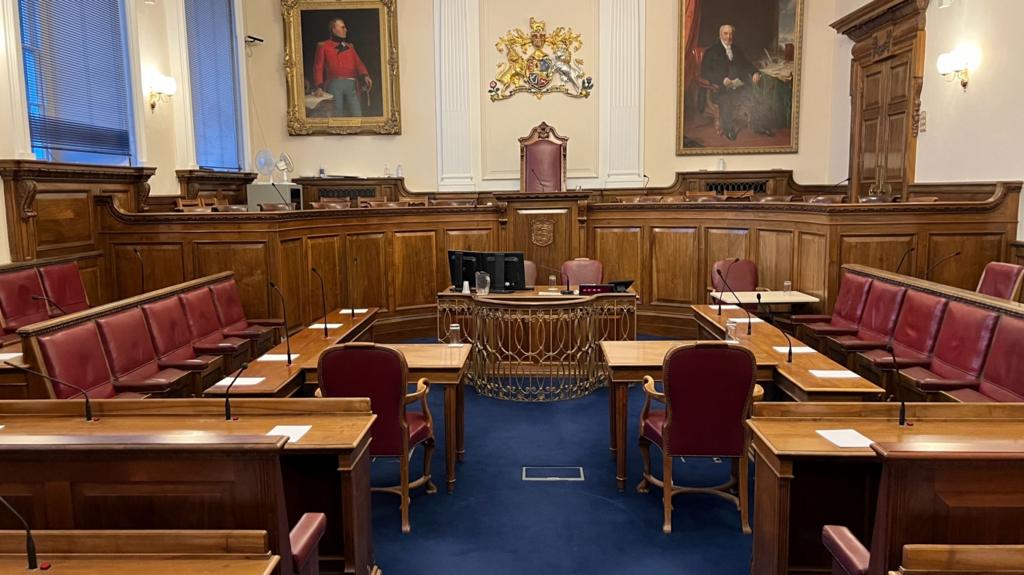Epstein Abuse Reports in 1996: Victims Ask Why No Action Was Taken
The scandal surrounding Jeffrey Epstein remains one of the darkest chapters in recent U.S. history, exposing systemic failures in law enforcement, media, and institutions that allowed a powerful predator to abuse young women and girls for decades. While much attention has focused on Epstein’s arrest in 2008 and his re-arrest in 2019, new revelations have resurfaced that push the timeline of ignored warnings even further back.
Victims, journalists, and advocates now highlight that reports of Epstein’s abusive behavior were made as early as 1996—years before any major investigation—yet no decisive action was taken. Survivors who tried to sound the alarm then are now speaking out, demanding to know why authorities, media outlets, and powerful figures failed to act.
This article explores the origins of those early warnings, the victims’ stories, the institutional silence, and the lasting implications of a system that turned a blind eye.
Early Warnings: 1996 Reports of Abuse
By the mid-1990s, Jeffrey Epstein was already well-connected among elites in politics, business, and academia. Operating out of his lavish homes in Palm Beach, New York, and elsewhere, he cultivated an image of wealth and influence that shielded him from scrutiny.
But behind the facade, troubling accounts began to surface.
Victims’ claims: Young women who encountered Epstein in the 1990s alleged they were recruited under false pretenses—offered modeling opportunities, tutoring jobs, or financial assistance—only to be coerced into sexual abuse.
Attempts to report: Some victims say they confided in adults, mentors, or even approached local authorities. Others claim they spoke to journalists who expressed initial interest but ultimately never published stories.
Patterns already evident: The grooming tactics, coercion, and manipulation that later became infamous in Epstein’s case were already visible by 1996. Victims stress that had authorities acted then, countless lives could have been spared from further trauma.
Why the Silence? Institutional Failures
The question remains: why did no meaningful action follow the 1996 reports? Several factors seem to have contributed.
1. Wealth and Power as a Shield
Epstein’s vast fortune, coupled with his connections to influential figures—including politicians, academics, and celebrities—created an aura of untouchability. His relationships with high-profile individuals may have discouraged scrutiny or reporting.
2. Reluctance of Media
Some journalists later admitted that whispers about Epstein circulated for years, but without concrete evidence, editors were hesitant to publish stories. Others have suggested that outlets feared legal retaliation, given Epstein’s aggressive lawyers and threats of lawsuits.
3. Law Enforcement Hesitation
Victims allege that early reports to local authorities were dismissed or minimized. Epstein’s donations to police foundations, schools, and local charities may have created conflicts of interest that discouraged thorough investigation.
4. Victim Vulnerability
Many of the victims were young, financially vulnerable, or from marginalized backgrounds. Their lack of power made it easy for institutions to ignore their voices.
Victims Speak Out: Voices from 1996 and Beyond
Several survivors who first attempted to raise alarms in the mid-1990s are now revisiting their experiences publicly.
“We were ignored.” One survivor described reporting Epstein’s behavior to adults in 1996, only to be met with disbelief and dismissal. “No one wanted to hear it.
“He bought silence.” Another recalled how Epstein used money and influence to suppress complaints: “If you spoke up, you risked being discredited or sued. He knew how to keep people quiet.”
“The media wasn’t ready.” Victims note that cultural attitudes in the 1990s often disbelieved young women, especially in cases involving powerful men. One survivor said: “People assumed we were exaggerating or out for money.”
These testimonies highlight a broader culture of dismissal that allowed Epstein’s crimes to flourish unchecked.
A Timeline of Missed Opportunities
1996 – Victims attempt to report abuse. Early media interest is noted, but stories are never published.
2002–2005 – More victims emerge, leading to initial investigations in Florida. Despite mounting evidence, prosecutors negotiate a controversial deal.
2008 – Epstein secures a “sweetheart plea deal,” serving only 13 months with extensive work-release privileges.
2019 – Arrested again on sex trafficking charges after investigative journalism and renewed victim testimony force authorities to act. Epstein dies in jail under controversial circumstances.
This timeline underscores a two-decade gap between the first known reports and any substantial consequences for Epstein.
Systemic Issues: Lessons from the 1996 Reports
The 1996 revelations serve as a stark reminder of how systemic issues perpetuate abuse.
1. Power Protects Abusers
When accused predators are wealthy and influential, institutions often hesitate to hold them accountable. Epstein’s case illustrates how money and connections can silence victims.
2. Victim Blaming and Disbelief
Society’s skepticism toward young victims—especially those from vulnerable backgrounds—creates barriers to justice. Survivors’ accounts were often dismissed as fabrications or exaggerations.
3. Failures of Journalism
The media’s reluctance to pursue the story in 1996 reflects broader challenges in investigative reporting. Fear of lawsuits, editorial caution, and the intimidation of powerful subjects all contributed to silence.
4. Need for Whistleblower Protections
The lack of robust protections for whistleblowers and victims made it easier for Epstein to continue operating. Strengthening such protections is essential to prevent future cover-ups.
Reactions Today: Why Victims Are Speaking Now
The resurgence of 1996-related accounts comes amid broader societal changes.
#MeToo Movement: The cultural shift brought by #MeToo has created a more receptive environment for victims’ voices, making it possible to revisit long-ignored claims.
Accountability Demands: Survivors argue that institutions which ignored the warnings in 1996 should face scrutiny today—whether media outlets, law enforcement agencies, or individuals who looked the other way.
Restorative Justice: While Epstein is dead, victims emphasize that acknowledging the truth and exposing institutional failures are critical steps toward healing and reform.
The Media’s Role: Could Things Have Been Different?
Journalists who later investigated Epstein acknowledge that earlier intervention by the press could have altered the trajectory.
Investigations delayed: Reporters at major outlets admitted they heard rumors but lacked support from editors to publish.
Fear of litigation: Epstein’s legal team was notoriously aggressive, using defamation suits as threats.
Changing standards: Media ethics have shifted, with greater emphasis today on listening to survivors rather than dismissing allegations as unreliable without “hard proof.”
The victims now ask: if reporters had pushed harder in 1996, how many lives could have been spared further harm?
Calls for Reform: Preventing Another Epstein
The 1996 reports remind us that systemic change is necessary. Key reforms include:
Strengthening Victim Support Systems – Ensuring victims feel safe to report abuse without fear of retaliation.
Independent Oversight of Law Enforcement – Preventing conflicts of interest that allow powerful figures to evade scrutiny.
Press Freedom and Protection – Supporting journalists in pursuing stories about powerful subjects without fear of ruinous lawsuits.
Educational Awareness – Empowering young people to recognize grooming and abuse, and providing clear channels for reporting.
Global Implications: Power and Abuse Across Borders
Epstein’s crimes were international in scope, with victims and associates across multiple countries. The 1996 reports highlight a broader global issue: elites can exploit power structures to silence dissent worldwide.
In countries with weaker institutions, similar cases of elite abuse remain unaddressed.
The Epstein scandal has become a symbol of how systemic failures transcend borders, demanding a global conversation on accountability and justice.
Conclusion: A Warning Ignored, A Lesson for the Future
The fact that reports of Epstein’s abuse date back to 1996—and were ignored—represents a profound failure of institutions meant to protect the vulnerable. Victims who bravely came forward then were dismissed, silenced, or disbelieved. Their renewed voices today are a powerful reminder of the cost of inaction.
The world now knows the scale of Epstein’s crimes, but the victims’ central question lingers: Why wasn’t action taken when it could have made a difference?
Answering that question requires more than historical reflection—it demands systemic change to ensure that future warnings are not ignored, no matter how powerful the accused may be.
http://Epstein abuse reports 1996 victims speak media why no action



